|
Electronic Poster: Young Investigator Awards
Electronic YIA Poster
Monday, 18 June 2018
| Exhibition Hall |
13:45 - 15:45 |
13:45
|
0066.
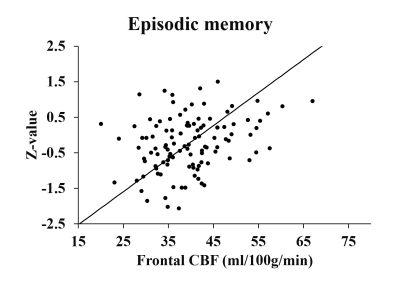 |
 Arterial-Spin-Labeling (ASL) perfusion MRI predicts cognitive function in elderly individuals: a four-year longitudinal study Arterial-Spin-Labeling (ASL) perfusion MRI predicts cognitive function in elderly individuals: a four-year longitudinal study
Jill De Vis, Shin-Lei Peng, Xi Chen, Yang Li, Peiying Liu, Sandeepa Sur, Karen Rodrigue, Denise Park, Hanzhang Lu
Identification of biomarkers that can predict cognitive decline is of utmost importance for advance in dementia pharmacotherapy. In this study, cerebral blood flow (CBF) is investigated as a predictor for cognitive decline in a healthy aging population. We found CBF in the frontal lobe to be most predictive for cognitive decline, specifically for episodic memory and in the older population. This suggest that CBF can be used as a biomarker to identify subjects susceptible to cognitive decline, to identify suitable cohorts for clinical trials, and to monitor the effects of pharmacotherapy.
|
14:05
|
0067.
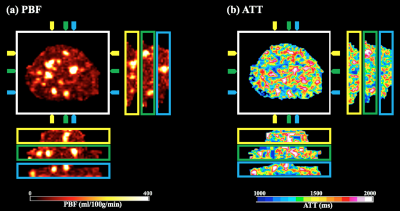 |
 Measuring human placental blood flow with multi-delay 3D GRASE pseudo-continuous arterial spin labeling at 3 Tesla Measuring human placental blood flow with multi-delay 3D GRASE pseudo-continuous arterial spin labeling at 3 Tesla
Xingfeng Shao, Dapeng Liu, Thomas Martin, Teresa Chanlaw, Sherin U. Devaskar, Carla Janzen, Aisling M. Murphy, Daniel Margolis, Kyunghyun Sung, Danny J.J. Wang
Placenta influences the health of both a woman and her fetus during pregnancy. Maternal blood supply to placenta can be measured non-invasively using arterial spin labeling (ASL). The purpose of this study is to present a multi-delay pseudo-continuous arterial spin labeling (pCASL) combined with a fast 3D inner-volume gradient- and spin-echo (GRASE) imaging technique to simultaneously measure placental blood flow (PBF) and arterial transit time (ATT), and to study PBF and ATT evolution with gestational age during the second trimester. The PBF values were compared with uterine arterial Doppler ultrasound to assess its potential clinical utility.
|
14:25
|
0068.
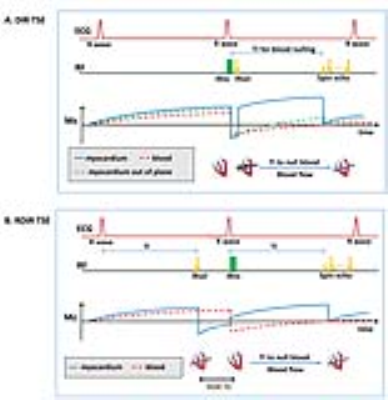 |
 Reverse double inversion-recovery: improving motion robustness of cardiac T2-weighted dark-blood turbo spin-echo sequence Reverse double inversion-recovery: improving motion robustness of cardiac T2-weighted dark-blood turbo spin-echo sequence
Chenxi Hu, Steffen Huber, Syed Latif, Guido Santacana-Laffitte, Hamid Mojibian, Lauren Baldassarre, Dana Peters
The cardiac T2-weighted dark-blood turbo spin-echo (TSE) sequence based on double inversion-recovery (DIR) is subject to motion artifacts due to mismatching of slices from the dark-blood preparation and the TSE readout. Here we propose reverse double inversion-recovery (RDIR), which performs the slice-selective inversion of the DIR preparation in the same cardiac phase as the TSE readout to minimize the slice mismatching. RDIR was evaluated in healthy subjects and patients. Results show that RDIR-TSE achieved a significantly improved image quality in the right ventricle and an improved image quality in the left ventricle compared to the standard DIR-TSE.
|
14:45
|
0069.
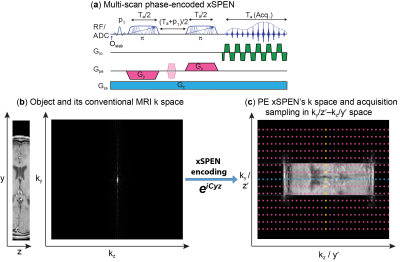 |
 Phase-encoded xSPEN: A novel high-resolution volumetric alternative to RARE MRI Phase-encoded xSPEN: A novel high-resolution volumetric alternative to RARE MRI
Zhiyong Zhang, Michael Lustig, Lucio Frydman
We have recently introduced cross-term SPatiotemporal ENcoding (xSPEN), a technique with exceptional resilience to field heterogeneities. This study explores a multi-scan extension of xSPEN, which simultaneously yields ky/kz data containing low and high frequency components as well as transposed low-resolution z/y images, with unique downsampling characteristics. A reconstruction scheme converting this information into high resolution 3D images with fully multiplexed volumetric coverage is introduced. The Results provide a series of high-resolution multiscan xSPEN imaging examples and analyzes their sensitivity vis-a-vis commonly used 2D RARE and multi-slab 3D RARE MRI techniques.
|
15:05
|
0070.
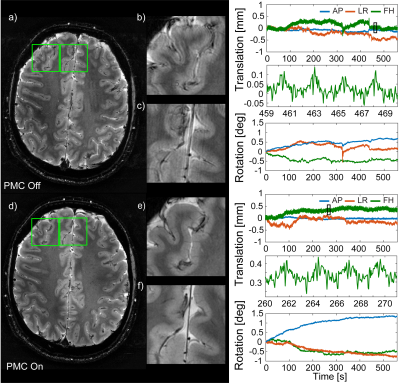 |
 Prospective motion correction with NMR markers using only native sequence elements Prospective motion correction with NMR markers using only native sequence elements
Alexander Aranovitch, Maximilian Haeberlin, Simon Gross, Benjamin Dietrich, Bertram Wilm, David Brunner, Thomas Schmid, Roger Luechinger, Klaas Pruessmann
A new method for tracking active NMR markers is presented. It requires no alterations of the MR sequence and can be used for prospective motion correction (PMC) in brain MRI. The proposed method collects high-frequency information present due to gradient switching from multiple short, temporally separated snippets within one or more TR of the given sequence. A tracking precision on the order of 10Ám and 0.01░ (RMS) for translational and rotational degrees of freedom is obtained. The method is demonstrated in-vivo with high-resolution 2D T2*-weighted GRE and 3D MPRAGE brain scans.
|
15:25
|
0071.
 |
 Learning a Variational Network for Reconstruction of Accelerated MRI Data Learning a Variational Network for Reconstruction of Accelerated MRI Data
Kerstin Hammernik, Erich Kobler, Teresa Klatzer, Michael Recht
In this work, we propose variational networks for fast and high-quality reconstruction of accelerated multi-coil MR data. A wide range of experiments and a dedicated user study on clinical patient data show that the proposed variational network reconstructions outperform traditional reconstruction approaches in terms of image quality and residual artifacts. Additionally, variational networks offer high reconstruction speed, which is substantial for the incorporation into clinical workflow.
|
|







